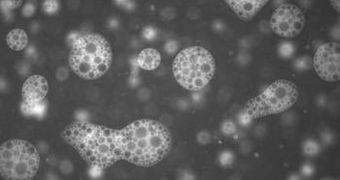Researchers at the Drexel University say that adhesive patches such as the ones used to delivery nicotine, hormones, and other types of medication could soon be loaded with drugs that fight diabetes and insulin. Thus far, doing so has proven to be a very complicated process.
The main hurdle here is the relatively large size of molecules in certain drugs. Insulin, for example, cannot readily permeate pores in the skin because the latter are too narrow. What the research group is working on is developing new types of drug-carrying structures, and new technique for allowing these structures to move through the skin even if they are bigger than pores.
Inserting drugs directly through the skin – a process called transdermal delivery – is a very effective methods of delivery medication exactly where it is needed. Unfortunately, the success of this method has proven somewhat limited to date, especially for really complex drugs.
The work is conducted by researchers Steven P. Wrenn, who is based at the DU College of Engineering, and Peter A. Lewin, who holds an appointment with the School of Biomedical Engineering, Science and Health Systems, at the university.
Their research began by conducting a detailed investigation on the molecular architecture of the human skin. At the same time, they studied a variety of chemical compounds that may be fitted for transdermal delivery, as well as methods of using ultrasounds to promote the absorption of these chemicals.
Currently, the team is experimenting with the drug called Methotrexate (MTX), which is heavily used to treat arthritis and a number of cancers. The MTX molecule is relatively large, so the chemical basically constitutes a model for drugs that may be delivered in this manner in the future.
The vessel of choice for traversing skin pores is the liposome, which is basically an empty sack made out of lipids. Scientists load drugs inside these containers, and then outfit them with so-called microbubbles. These are tiny structures that can act as sails on a ship.
The ultrasounds are used to push the microbubble-powered liposome through the skin. Once the passage is complete, a slightly different ultrasound frequency could pop the liposomes open, spilling their precious cargo directly into the human bloodstream.

 14 DAY TRIAL //
14 DAY TRIAL //